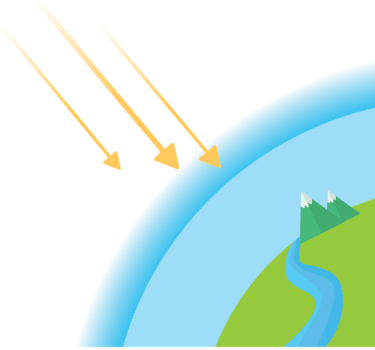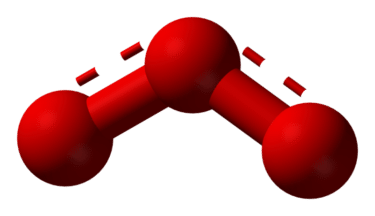The town of Itajai in the southern Brazilian state of Santa Catarina has been the focus of much puzzlement during the ongoing COVID-19 pandemic. The town’s mayor – who is a medical doctor – has adopted a particularly striking strategy: to throw at the virus every conceivable alternative therapy or social media hype he can find.
It started with homeopathy, which he wanted to distribute as a prophylactic, using healthcare agents to deliver it personally to people’s homes, before moving on to hydroxychloroquine, then ivermectin and more recently, ozone therapy delivered by rectal insufflation. You don’t have to be an expert in medical terminology to work out how the ozone makes its way into the patient.
This last one, announced in early August, attracted a lot of attention – not just because of the obvious cheap jokes, but also because, in Brazil, the most vocal promoters of ozone therapy have strong links with the antivaccination movement, and they have powerful friends in high places.

Ozone is a corrosive, toxic gas. We need it in the stratosphere to block harmful UV radiation from the Sun, but closer to the ground, where people can inhale it, it is a health hazard and an indicator of air pollution, a component of smog: it can be formed by chemical reactions involving automobile emissions.
“Ozone therapy” is the putative use of ozone to treat health complaints. As it is common in the world of so-called complementary and alternative medicine, ozone has been proposed as a cure for every disease and condition under the sun, from HIV infection to cancer. Predictably, it has also been offered as a form of relief for COVID-19.
Itajai’s move was not exactly original: in April, a clinic in the United States was forbidden from promoting ozone as a cure for SARS-CoV-2. The FDA does not authorize the use of ozone therapy for any condition, and has stated that “ozone is a toxic gas with no known useful medical application in specific, adjunctive, or preventive therapy. In order for ozone to be effective as a germicide, it must be present in a concentration far greater than that which can be safely tolerated by man and animals”.
In Brazil, the Federal Board of Medicine forbids the use of ozone in regular clinical practice: ozone therapy can only be offered in the context of medical research. This fact, however, did not stop the Ministry of Health from including this modality in the official list of alternative medicines officially adopted by Brazil’s national healthcare system. In 2018, ozone therapy joined the other 28 CAM modalities currently paid for with taxpayers’ money (the list includes old chestnuts like homeopathy and acupuncture, alongside less popular ones like Reiki or Family Constellations).
The Ministry of Health’s official website describes ozone therapy as a “low-cost safe therapy” that can be used for several health conditions. It states: “Some health sectors regularly adopt this practice in their clinical protocols, these include dental care, neurology and oncology”.
It is quite shocking to realise that the Federal Board of Medicine restricts ozone therapy to experimental protocols in clinical trials, but the Ministry of Health states that the practice is already in use to treat neurological conditions and cancer.
In 2017, the then Senator (and former governor of the northern state of Rondonia) Valdir Raupp proposed a bill that, if approved, would authorize the practice in the country, effectively overruling the Board of Medicine. The bill has already been approved by the Senate and now waits for a vote in the Lower Chamber of Congress.
When an outbreak of mass psychogenic illness – caused by fear and stress related to vaccines – followed a vaccination campaign for HPV infection in another northern Brazilian state, Acre, proponents of ozone therapy tried to get the authorities to interrupt the vaccination and use ozone to treat the girls affected. Since then , the ties between pro-ozone and antivaxx movements in Brazil have strengthened.
Such an alliance is troubling, not least because the ozone lobby has shown an alarming level of access to public authorities, including senators, ministers and at least one mayor – that of Itajai. Vaccination coverage in Brazil has been dropping in recent years, mostly due to logistical difficulties, and an added layer of ideological fearmongering does not help.
Unlike anthroposophy, chiropractic, “energy” healing or homeopathy and other kinds of CAM, ozone therapy doesn’t depend on blatantly antiscientific principles, neither does it, in principle violate scientific laws.

The ozone molecule is made of three oxygen atoms linked together. The “common” oxygen molecule, that is essential for all multicellular life on Earth, has only two atoms. There are several modes of action proposed to try to explain why ozone therapy would be expected to work for something (there is no evidence that it does, though, for anything). One such purported reason is the ability of ozone to kill fungi, bacteria and destroy viruses (in vitro only – as has been correctly noted elsewhere bleach, soap and handguns also can kill microbes, in a lab dish), and there’s even a proposed “biochemical cascade” offered to “describe” the supposedly beneficial action of ozone in the blood.
Despite these scientific-sounding trappings, ozone therapy sits quite comfortably with the more extravagant varieties of CAM, and several of its proponents adopt their language, modes of discourse and beliefs without compunction. One publicity piece goes so far as to assert that since ozone produces “positive” ions, it is capable of neutralizing “negative” influences, such as viruses and parasites. The disingenuous conflation of the technical and metaphorical senses of “positive/negative” is an old trick from the CAM repertoire.
Alternative therapies and pseudoscientific beliefs seem to sprout from the same roots, defined by an absence of evidence and a hostility towards mainstream science. That such hostility expresses itself in antivaxxer rhetoric may be regrettable, but it should not be surprising.
What should be noted, though, is that here in Brazil this pseudoscientific network that promotes irrationality and magical thinking is well organized politically, cultivating friendly lawmakers and government officials. The scientific community, on the other hand, is scattered, disorganized and only comes together as a political entity when funding is under threat. Funding is essential for science, of course, but so is the ethos of respect for evidence. Brazilian scientists who ignore the corrosion of this principle do a disservice to themselves and to the society they serve.



